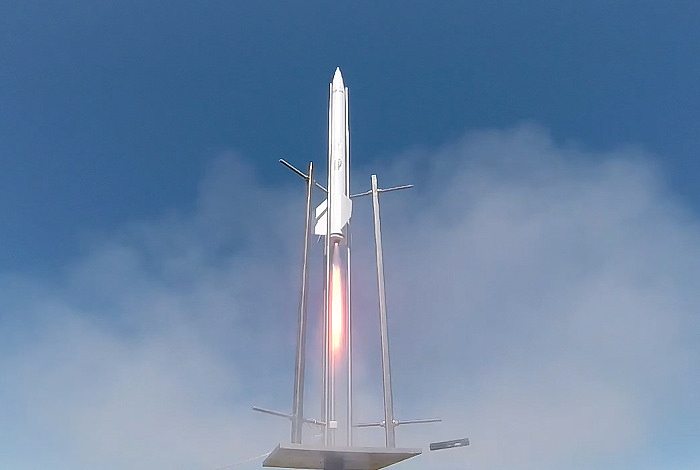Los Alamos National Laboratory scientists recently flight tested a new rocket design that includes a high-energy fuel and a motor design that also delivers a high degree of safety.
“What we’re trying to do is break the performance versus sensitivity curve, and make a rocket that’s both very high-energy, as well as very safe,” said Bryce Tappan, an energetic materials chemist at the Laboratory.
“Typically, when you look at a propellant that’s high-performance, it’s not as safe a material.” See the flight tests and hear how Tappan and his research partners at New Mexico Tech and Penn State accomplished a fully successful flight in a new video on the Laboratory’s YouTube Channel.
Conventional solid-fuel rocket motors work by combining a fuel and an oxidizer, a material usually rich in oxygen, to enhance the burning of the fuel. In higher-energy fuels this mixture can be somewhat unstable, and can contain sensitive high explosives that can detonate under high shock loads, high temperatures, or other conditions.
The new rocket fuel and motor design adds a higher degree of safety by separating the fuel from the oxidizer, both novel formulations that are, by themselves, not able to detonate.
“Because the fuel is physically separated from the oxidizer,” said Tappan, “you can utilize higher-energy propellants.”
After years of development and bench-top static tests, the new rocket design was recently flight tested at the Energetic Materials Research and Testing Center’s Socorro launch site, part of New Mexico Tech. The new rocket design was tested against conventional, high-energy commercial rockets to enable a comparison of data gathered on velocity, altitude, burn rate, and other parameters.
“You don’t have to do much more than a few seconds of YouTube searching to find numerous failed rocket tests,” said Tappan. “So, I had that worry in the back of my mind. But once we saw that successful launch go off, it was the culmination of a lot of years of research, it was very satisfying to see it fly.”
Researchers will now work to scale-up the design, as well as explore miniaturization of the system, in order to exploit all potential applications that would require high-energy, high-velocity, and correspondingly high safety margins.











